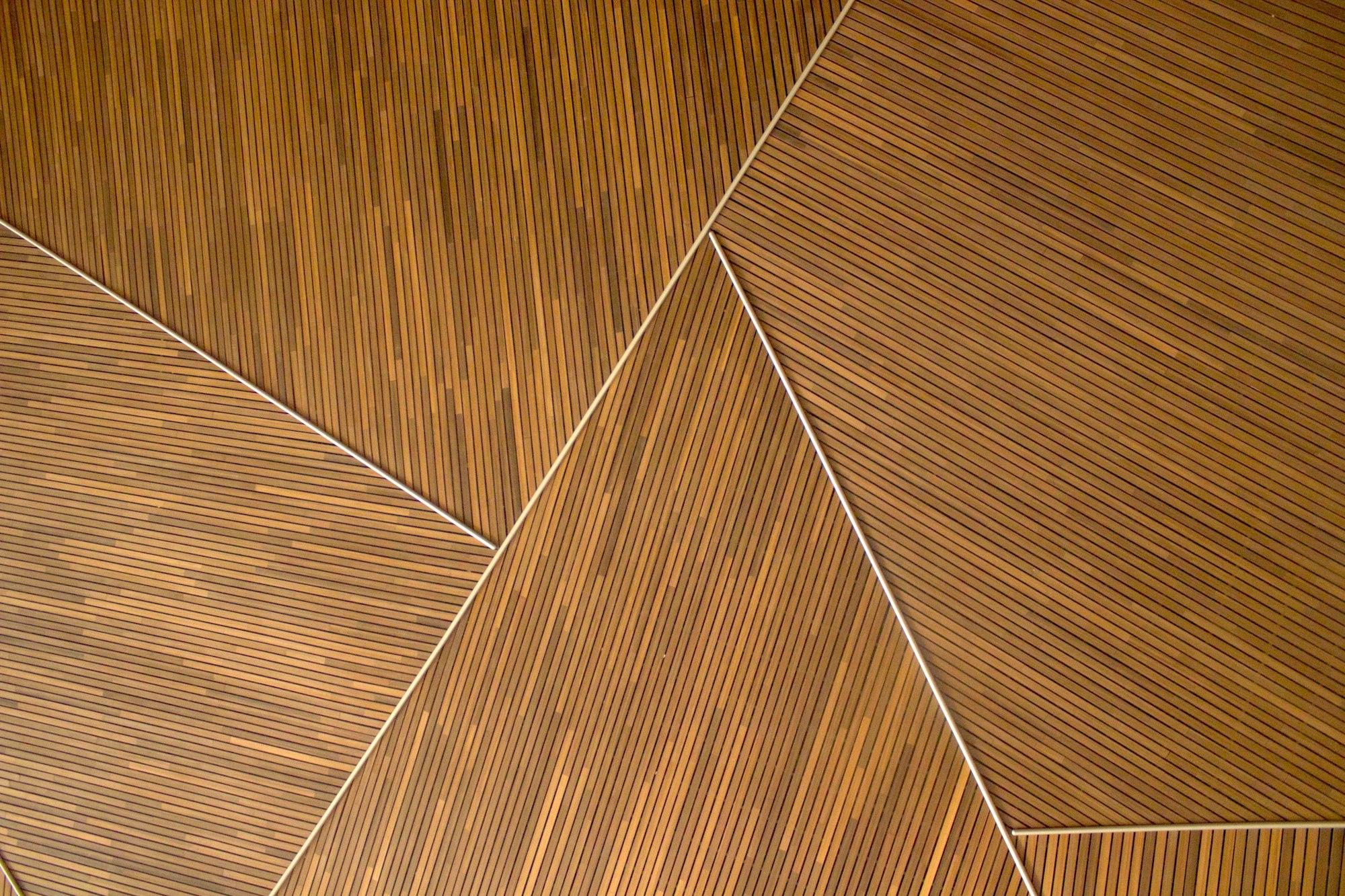MDF vs. Real Wood: Making the Right Choice for Your Home
From oak's timeless strength to MDF's smooth versatility, each material offers unique advantages, proving that in home design, the perfect choice often lies in the details.

Photo by Teo D
When it comes to selecting materials for furniture and home construction, the debate often narrows down to Medium Density Fiberboard (MDF) versus natural wood. Each material has its unique characteristics, advantages, and disadvantages. Understanding these elements can help homeowners make the best choice for their needs, style, and budget.
MDF vs. Natural Wood: Which is Better?
The decision between MDF and natural wood isn't simply a matter of aesthetics. Both materials offer different benefits and drawbacks depending on the application. Therefore, it's crucial to examine the characteristics of each closely.
Pros and Cons of MDF
MDF is constructed from wood fibers combined with adhesives, forming a dense board. Some of its pros include:
- Cost-Effective: MDF is generally much cheaper than natural wood, making it a go-to option for budget-conscious projects.
- Smooth Surface: Its surface is free from knots or imperfections, providing an excellent base for painting or veneering.
- Versatile: MDF can be easily cut and shaped into intricate designs, making it suitable for various applications.
On the flip side, some cons of MDF are:
- Susceptible to Moisture: MDF can swell and lose structural integrity when exposed to water.
- Durability: While MDF is dense, it is less durable than natural wood and can succumb to heavy impacts.
- Environmental Concerns: Manufacturing MDF involves chemicals that may be harmful to the environment.
Benefits of Choosing Real Wood
Natural wood offers a host of benefits that can make it a more desirable option depending on the project. These include:
- Durability: Quality natural wood, especially hardwood, can last for generations when maintained properly.
- Aesthetic Appeal: The unique grain patterns and warmth of natural wood add an unmatched beauty to any setting.
- Value Retention: Furniture made from real wood tends to retain its value over time better than MDF.
However, opting for natural wood does come with its own set of drawbacks:
- Cost: Real wood is often significantly more expensive than MDF.
- Maintenance: Wood requires regular maintenance, including oiling and refinishing, to keep it in prime condition.
Moreover, the sourcing of natural wood can also raise concerns regarding sustainability. With increasing awareness of deforestation and the impact of logging on ecosystems, many consumers are now opting for certified sustainable wood options. This not only ensures that the wood is harvested responsibly but also supports the preservation of forests and wildlife. Additionally, reclaimed wood has gained popularity as an eco-friendly alternative, offering a unique character while reducing the demand for new lumber.
On the other hand, while MDF is often viewed as a more environmentally harmful choice due to its manufacturing process, advancements in technology are leading to more sustainable practices in its production. Some manufacturers are now using recycled wood fibers and low-emission adhesives, making MDF a more viable option for environmentally conscious consumers. This evolution in both materials highlights the importance of considering not just the immediate benefits and drawbacks, but also the long-term implications of your choice.
Comparing Hardwood and Softwood
Before settling on natural wood, it's essential to understand the differences between hardwood and softwood. Both types offer unique qualities suitable for various uses. The choice often depends on both functionality and aesthetics.
Key Differences Between Hardwood and Softwood
Hardwoods come from deciduous trees that lose their leaves in the fall, while softwoods originate from coniferous trees, which keep their needles year-round. Key differences include:
- Density: Hardwoods tend to be denser and more durable compared to softwoods.
- Growth Rate: Softwoods generally grow faster and therefore are usually less expensive.
- Grain Patterns: Hardwoods offer rich, complex grain patterns, while softwoods typically have a more uniform appearance.
Best Uses for Hardwood and Softwood
The selection of hardwood or softwood can also dictate their applications:
- Hardwood: Commonly used for furniture, flooring, and cabinetry due to its durability and aesthetic appeal.
- Softwood: Frequently utilized in framing, roofing, and cheaper furniture options where strength is less of a concern.
In addition to their structural applications, the visual characteristics of hardwoods make them a favorite among artisans and woodworkers. The intricate patterns and rich colors of hardwoods like oak, cherry, and walnut allow for stunning finishes that can elevate any space. Moreover, hardwoods are often favored in high-end projects, such as custom cabinetry and intricate moldings, where the quality of materials is paramount. Their ability to take stains and finishes beautifully adds to their appeal, making them a long-lasting investment in both residential and commercial settings.
On the other hand, softwoods, such as pine and cedar, are not only budget-friendly but also versatile in their uses. Their lightweight nature makes them easier to work with, which is particularly advantageous for DIY enthusiasts and builders alike. Softwoods are also commonly treated for outdoor use, as certain varieties, like redwood and cedar, possess natural resistance to decay and insects. This makes them ideal for outdoor furniture, decks, and fencing. Furthermore, the availability of softwoods in large quantities contributes to their widespread use in construction, where they provide structural integrity without straining budgets.
Understanding the Features of Natural Wood
Natural wood’s appeal isn’t just skin deep; its features and characteristics can significantly influence its usability in various applications. Knowing what to look for can help you select the right type for your projects. The warmth and aesthetic charm of natural wood can elevate any space, making it a favored choice among designers and homeowners alike. Beyond its visual appeal, the tactile experience of wood—its texture and warmth—adds a unique sensory element that synthetic materials often lack.
Unique Characteristics of Different Wood Types
Different wood species possess distinct characteristics that can affect their strength, appearance, and even workability. Here are a few key types:
- Oak: Known for its strength and prominent grain, oak is ideal for furniture and flooring. Its durability makes it resistant to wear and tear, making it a popular choice for high-traffic areas.
- Pine: A softwood that is lightweight and easy to work with—commonly used in projects that require ease of construction. Its natural knots and light color can add a rustic charm, perfect for country-style decor.
- Maple: Hard maple is durable and often selected for high-quality cabinetry. Its fine, consistent grain allows for a smooth finish, making it a favorite among woodworkers for intricate designs.
How to Identify Quality Natural Wood
Identifying quality natural wood involves examining grain patterns, color consistency, and finish:
- Grain Patterns: A good quality wood will have uninterrupted grain patterns and limited knots. The grain can also tell a story about the tree’s growth conditions, adding character to each piece.
- Moisture Content: Properly dried wood should feel dry and have a consistent density to avoid warping. Understanding the moisture content is crucial, as it can affect the wood's stability and longevity in your project.
- Finish: A polished finish can indicate quality craftsmanship and care in production. Additionally, the type of finish used can enhance the wood's natural beauty, bringing out its unique hues and patterns.
Moreover, the sustainability of the wood source is becoming increasingly important for many consumers. Responsible sourcing ensures that the wood is harvested in a way that supports forest regeneration and biodiversity. This aspect not only contributes to environmental health but also adds value to the wood itself, as products made from sustainably sourced materials are often more desirable in the marketplace. As you explore the world of natural wood, consider the broader implications of your choices, and how they can contribute to a more sustainable future.
Lastly, understanding the finishing techniques can also enhance your appreciation for natural wood. Various finishes, such as oil, lacquer, or polyurethane, can dramatically alter the appearance and texture of the wood, providing different levels of sheen and protection. Each finish has its own application method and drying time, which can impact the overall look and durability of your project. By mastering these techniques, you can not only protect your wood but also elevate its natural beauty, ensuring that your work stands the test of time.
Exploring the World of Plywood
Plywood is another popular material that plays a significant role in construction and furniture making. It’s widely used due to its flexibility and strength.
Types of Plywood and Their Uses
Different types of plywood cater to various applications, including:
- Structural Plywood: Strength is its hallmark, making it ideal for supporting structures.
- Decorative Plywood: Often utilized for surfaces that will be exposed, such as cabinetry and furniture.
- Marine Plywood: Engineered to withstand moist conditions, this is perfect for boat building and outdoor construction.
Advantages of Using Plywood in Projects
Choosing plywood offers several advantages, such as:
- Cost-Effective: Generally, plywood provides a cheaper alternative than solid wood products.
- Strength and Stability: Plywood layers are glued together in various directions, contributing to strength and reducing warping.
- Wide Availability: Plywood is readily available in various grades and thicknesses, suitable for numerous applications.
The Basics of Veneers
Veneers are thin slices of wood that are glued onto core panels (like wood, particle board, or medium-density fiberboard) to produce flat panels such as doors, tops, and panels for cabinets. These can offer the beauty of real wood at a fraction of the cost.
How Veneers Are Made
The process of making veneers is quite fascinating. First, logs are debarked and then cut into thin sheets through various methods such as slicing or peeling. This allows for the extraction of beautiful grain patterns while conserving expensive wood resources.
Applications and Benefits of Using Veneers
Veneers are commonly used in a variety of applications:
- Furniture Making: They create beautiful, high-quality surfaces on less expensive materials.
- Paneling: Veneers are often used in wall paneling due to their aesthetic appeal and lower cost.
- Cabinetry: Wood veneers allow for a luxurious finish without the hefty price tag associated with full solid wood construction.
Final Thoughts
When choosing between MDF, real wood, plywood, and veneers, it's essential to evaluate your specific needs, preferences, and budget. Each option brings its unique features, and understanding them will guide you to make an informed choice for your home.
Quick facts
Is MDF as good as real wood?
MDF is not as durable as real wood but offers a cost-effective and smooth alternative. It's great for painted surfaces and indoor furniture but lacks the strength and longevity of solid wood, making it less suitable for heavy-duty applications.
What are the disadvantages of MDF wood?
Disadvantages of MDF include its susceptibility to moisture, making it unsuitable for wet environments. It’s also less durable than solid wood and can be prone to cracking or breaking if not handled carefully. Additionally, it emits VOCs due to its resin-based construction.
Where should you not use MDF?
Avoid using MDF in areas with high humidity or moisture, such as bathrooms or kitchens, as it can swell and deteriorate when exposed to water. It's also not ideal for outdoor furniture or load-bearing structures due to its limited strength.
How to tell the difference between wood and MDF?
You can differentiate wood from MDF by its grain and weight. Wood has a natural grain and is heavier, while MDF is smooth, uniform, and lighter. MDF edges may also appear rougher when cut, whereas real wood maintains its grain pattern.

Dane Hurtubise
Co-founder & CEO of Spoken
Dane Hurtubise is the Co-founder & CEO of Spoken. He has led two venture-backed companies and is a two-time Y Combinator alum. Prior to Spoken, Dane sold his previous company, Parklet, to Greenhouse Software where he served as VP of Platform and Partnerships. An avid runner, cyclist, and Pilates enthusiast, Dane holds a BS in Electrical and Computer Engineering from the University of Texas at Austin.
Read more